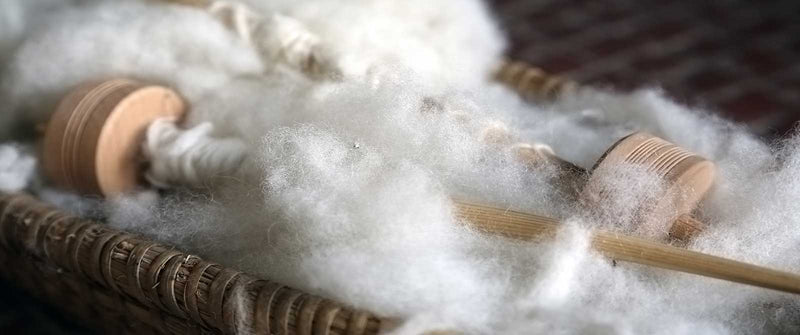The Intriguing World of cashmere: Understanding Its Composition and Uses
The Intriguing World of cashmere: Understanding Its Composition and Uses
Blog Article
Discovering the Various Types of Cashmere a Natural Fiber for Ultimate Luxury
Cashmere, an all-natural fiber, is commonly connected with deluxe and convenience. The much more inexpensive Chinese cashmere, the conventional Scottish variant, and the premium Italian blend, all inform a various story of this exceptional fiber.
Comprehending the Lavish Nature of Cashmere
Cashmere, typically connected with luxury and comfort, holds an one-of-a-kind appeal on the planet of all-natural fibers. This soft, lightweight product is coveted for its outstanding heat and impressive resilience. Unlike other all-natural fibers, cashmere combines insulation with breathability, providing unparalleled convenience throughout differing temperature levels. Its shiny coating and soft texture add to its high-end appeal, validating the premium cost that frequently features cashmere garments. In addition, cashmere's fundamental crease resistance and flexibility boost its desirability, making it a recommended option for premium apparel and devices. In spite of its delicate look, cashmere has a surprising durability, able to maintain its form and glamorous feel over time. This one-of-a-kind mix of qualities seals cashmere's setting as a sign of style and indulgence.
Simply What Is Cashmere and Where Does It Originate from?

Given these extraordinary high qualities, one might question the beginning and makeup of this luxurious fiber. Cashmere is acquired from the soft undercoat of cashmere goats, mainly found in Mongolia, China, Iran, and Afghanistan - is cashmere a natural fiber. These goats are adapted to harsh climatic problems, creating an exceptionally great, soft underfur as a defense against the bitter cold. This underfur, or undercoat, is what is gathered for cashmere. Each spring, when the goats naturally dropped their winter layer, farmers comb the great underhair, leaving the coarser hair behind. This meticulous procedure adds to the deficiency and high price of cashmere. With its origin in the extreme landscapes of Asia, cashmere is a testament to nature's ability to generate luxury from misfortune.
Translating the Different Sorts Of Cashmere
Comprehending the various kinds of cashmere is key to valuing the top quality and special features of this extravagant fabric. Normally, cashmere is classified into 3 types: raw, virgin, and reused. Raw cashmere is directly acquired from the goat and is unrefined. This type commonly has pollutants such as dust and coarse hair. Virgin cashmere, on the various other hand, is the pure, unrecycled material that is spun right into yarn for the very first time. It is the softest and most glamorous. Recycled cashmere is made from virgin material that has actually been previously made use of. It is re-spun and utilized check here in producing lower-cost cashmere products. Decoding these types is the very first step in comprehending the exclusivity and worth of cashmere.

The Distinct Characteristics of Each Sort Of Cashmere
Having actually discovered the various groups of cashmere, it becomes apparent Full Article that each kind flaunts its distinct collection of attributes. Mongolian cashmere, for circumstances, is renowned for its superior high quality, due to Mongolia's severe winter seasons that produce longer and finer fibers. On the other hand, Chinese cashmere is commonly a lot more cost effective, though its shorter fibers can decrease sturdiness.
Why Cashmere Is the Epitome of Luxury in vogue
Cashmere holds a well-regarded position in the globe of style, regarded as a symbol of high-end and elegance. Its attraction is not just in its soft qualities and warmth, but also in its rarity and the careful process associated with its purchase. Cashmere is originated from the great undercoat of Himalayan goats, understood for their remarkable high quality fiber. The shortage of this fiber, combined with the labor-intensive process of collection, contributes to its high rate and special status. Cashmere's unrivaled comfort and toughness make it a popular material in the development of high-end garments. Its all-natural lightweight and protecting residential or commercial properties contribute to its desirability, making it the embodiment of deluxe in vogue.
The Process of Making Cashmere: From Goat to Garment
The journey of cashmere, from being an undercoat of a Himalayan goat to a lavish garment, is an intricate one. This blend is after that fastidiously divided, with only the soft down made use of for cashmere. From goat to garment, each step is a testament to the skill, persistence and artistry included in crafting cashmere.

Verdict
Finally, cashmere, with its natural elegance and unmatched convenience, reigns supreme worldwide of luxury Recommended Reading style. The diversity in types, ranging from the soft Mongolian, light-weight Indian Pashmina, affordable Chinese, typical Scottish, to the vibrant Italian, discloses the convenience of this natural fiber. The meticulous procedure of changing it from a goat to a garment further includes in its exclusivity, making cashmere the epitome of elegance and deluxe.
Cashmere, an all-natural fiber, is usually connected with deluxe and comfort (is cashmere a natural fiber).Cashmere, usually connected with luxury and convenience, holds an one-of-a-kind allure in the globe of natural fibers. Unlike various other all-natural fibers, cashmere combines insulation with breathability, supplying unparalleled comfort throughout differing temperatures. Cashmere is derived from the soft undercoat of cashmere goats, largely found in Mongolia, China, Iran, and Afghanistan. Cashmere is acquired from the fine undercoat of Himalayan goats, understood for their premium quality fiber
Report this page